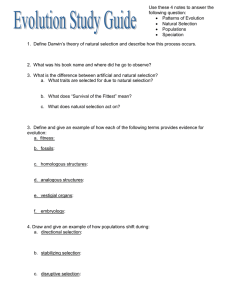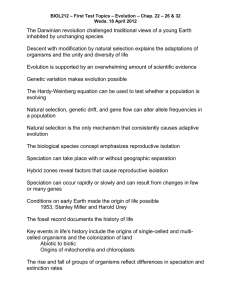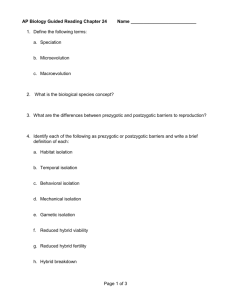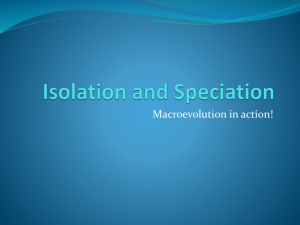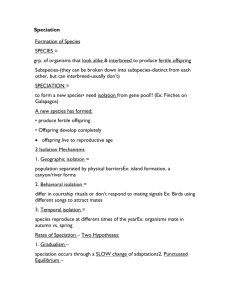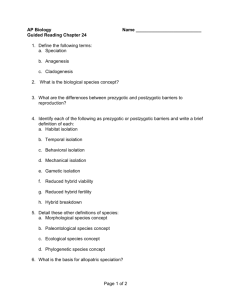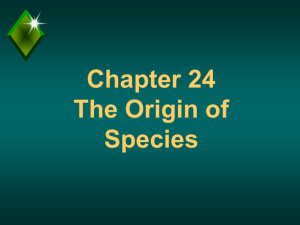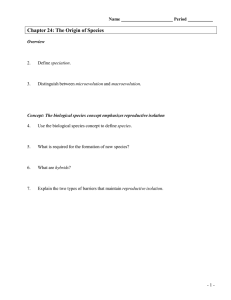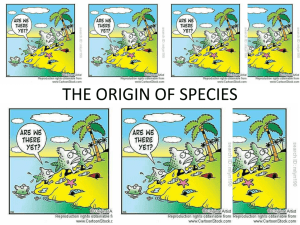The Origin of Species
advertisement
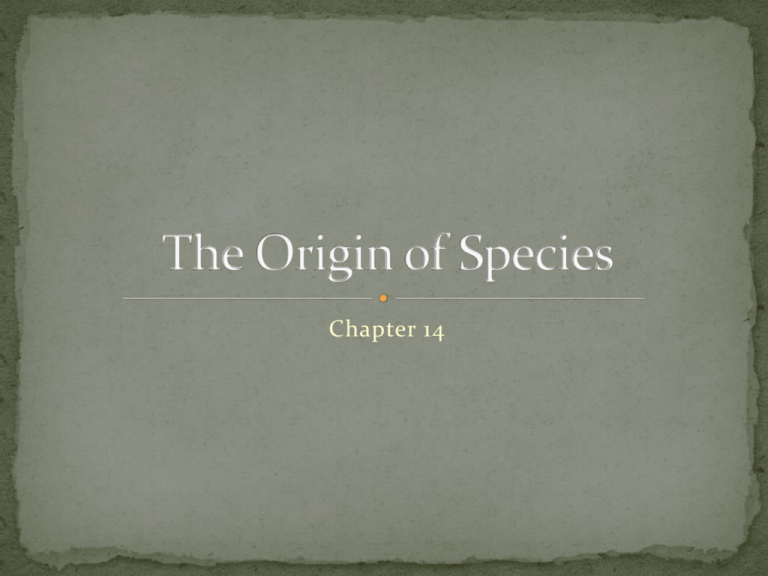
Chapter 14 Biological Species Concept Morphological Species Concept Ecological Species Concept Phylogenic Species Concept Primary Definition Considered the same species if they produce fertile offspring Not useful for asexually reproducing organisms Not useful when examening fossils Grolar – hybrid from Grizzly & Polar Bears Photo:via Inhabitots.com 1.8 million species have been identified using this method Useful for assexual and extinct species Problem : subjective & open to dispute (often heated!) Species identified by niche Two different species may look similar, but have different feeding patterns or live in different environments Defines a species as the smallest group of individuals sharing a common ancestor Can be based on genetic differences or morphological differences Can often cause disputes Allopatric Speciation Reproductive barriers are formed as populations diverge Sympatric Speciation Polyploid Speciation Adaptive Radiation Geographic isolation leads to speciation Hybrid offspring are less fit than parents This reinforces reproductive barriers Speciation process reverses and two hybridizing species fuse into one Hybrid Zone Original Population Allopatric Speciation Reproductive Isolation results from Isolating mechanisms which include Behavioral isolation Geographic isolation Temporal isolation produced by produced by produced by Behavioral differences Physical separation Different mating times which result in Independently evolving populations which result in Formation of new species
